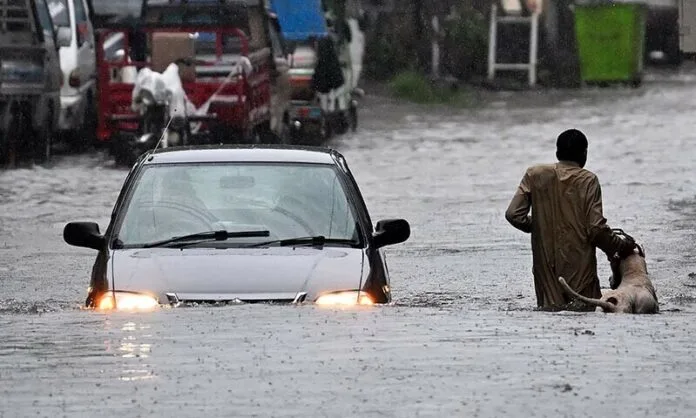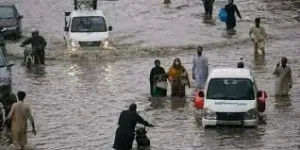Monsoon Rains Claim 258 Lives Across Pakistan, NDMA Reports
Torrential rains continued to lash several parts of Pakistan, claiming six more lives in the past 24 hours and pushing the nationwide monsoon death toll to 258, according to the National Disaster Management Authority (NDMA). The latest casualties include three deaths in Khyber Pakhtunkhwa, two in the federal capital Islamabad, and one in Sindh, the agency confirmed in its daily situation report.
In addition to the fatalities, five people sustained injuries in various rain-related incidents in Khyber Pakhtunkhwa over the same period. The NDMA report paints a grim picture of the ongoing monsoon emergency, with widespread damage to life, property, and livestock recorded across all provinces and territories.
A Rising Human Toll
Since the onset of the current monsoon spell, which began in late June, a total of 258 individuals have lost their lives, while 616 others have been injured in rain-related tragedies across Pakistan.
Demographic breakdowns provided by the NDMA reveal that among the deceased, 89 are adult men, 46 women, and 123 children. Out of this, 243, 170, 203 were men, women, and children respectively, meaning that more vulnerable groups (children in particular) have been affected by the monsoon destruction.
Widespread Structural and Livestock Losses
The relentless downpours have not only claimed lives but also left a trail of destruction across the country. Last 24 hours alone there were 22 dwellings destroyed, and 36 stock animals were killed. Since the beginning of the season, at least 1,027 houses have been demolished due to flooding and structural collapse, while 364 animals have been reported dead, causing economic distress in rural and peri-urban communities.
The damages span from urban centers to remote villages, compounding the humanitarian challenge already posed by flash floods and landslides.
Province-Wise Casualty Distribution
Punjab remains the hardest-hit province so far, with 139 fatalities and 477 injuries. Khyber Pakhtunkhwa follows with 60 confirmed deaths, while Sindh has reported 24 rain-related fatalities.
Pakistan has so far registered one death each in Islamabad Capital Territory and Balochistan during the ongoing spell. The northern regions of Gilgit-Baltistan and Azad Jammu and Kashmir reported five and two deaths, respectively.
Leading Causes of Death
The NDMA has categorized the causes of fatalities, noting that the collapse of residential structures remains the leading reason, with 143 deaths recorded due to homes caving in. Other causes include:
-
Flash floods: 41 deaths
-
Drowning: 36 deaths
-
Lightning strikes: 13 deaths
-
Electrocution: 12 deaths
-
Landslides: 4 deaths
These statistics underscore the urgency of enhancing public awareness and structural resilience in vulnerable areas, particularly where poorly built houses are prone to collapse under prolonged rainfall.
Tragedy at Babusar Top: A Family Swept Away
Among the most heart-wrenching incidents occurred at Babusar Top, where a sudden cloudburst triggered a deadly flash flood. A family attempting to save a three-year-old boy named Abdul Hadi was swept away by the powerful current. Among those who lost their lives was Dr. Mishal, who reportedly leapt into the torrent in a desperate attempt to save the child.
This incident has come to symbolize the tragic human cost of extreme weather events, as entire families are torn apart in moments due to nature’s fury.
Ongoing Rescue and Relief Efforts
Despite the daunting challenges, NDMA-led rescue teams have intensified efforts across affected regions. From June 26 to July 24, 2025, the agency conducted 148 emergency rescue operations, successfully evacuating 1,777 people from life-threatening situations.
Here’s a breakdown of rescue operations by region:
-
Punjab: 128 missions, 1,543 people rescued
-
Khyber Pakhtunkhwa: 10 missions, 116 people rescued
-
Sindh: 3 missions, 53 people rescued
-
Balochistan: 2 missions, 5 people rescued
-
Gilgit-Baltistan: 1 mission, 25 people rescued
-
Islamabad Capital Territory: 4 missions, 35 people rescued
The NDMA has also worked in coordination with provincial disaster management authorities (PDMAs), armed forces, and local administrations to ensure timely responses in high-risk zones.
NDMA Issues Public Advisory
In view of the worsening weather conditions, the NDMA has urged the public to exercise maximum caution. Citizens are advised to:
-
Avoid traveling through flood-prone areas
-
Stay indoors during thunderstorms and heavy rain
-
Refrain from taking shelter under trees or weak structures
-
Follow local administration advisories and evacuation orders
-
Report emergencies to local disaster helplines
The authority emphasized that preventive measures and community awareness can significantly reduce the risk of further casualties as the monsoon season progresses.
Government Coordination and Preparedness
Federal and provincial governments continue to monitor the situation with high alert. Emergency control rooms remain operational in flood-prone districts, while medical teams and relief camps have been set up for displaced families.
Authorities are also assessing damage for compensation and rehabilitation efforts, especially for families who have lost their homes or livelihoods.
The Road Ahead
As rainfall forecasts indicate further monsoon activity in the coming days, Pakistan faces a critical period where the capacity of its disaster response infrastructure will be tested. With hundreds already dead and thousands affected, long-term climate resilience, improved urban planning, and better early warning systems are now being seen as vital imperatives for the country.


